How Long Can You Drive On Unbalanced Tires?
Driving on an unbalanced tire can be a frustrating experience, and it can degrade your driving dynamics. Beyond causing discomfort, unbalanced tires can also significantly threaten the vehicle and the driver’s safety.
How long can you drive on unbalanced tires? Expert tire mechanics say an unbalanced tire can go about 2-3 months before it starts damaging the vehicle and causing severe problems. However, it is still better to get the tire balanced as soon as the symptoms are visible.
I will explain in depth the main causes, benefits, symptoms, and dangers in this article. Let’s dive in to understand completely and drive confidently.
What Causes Unbalanced Tires
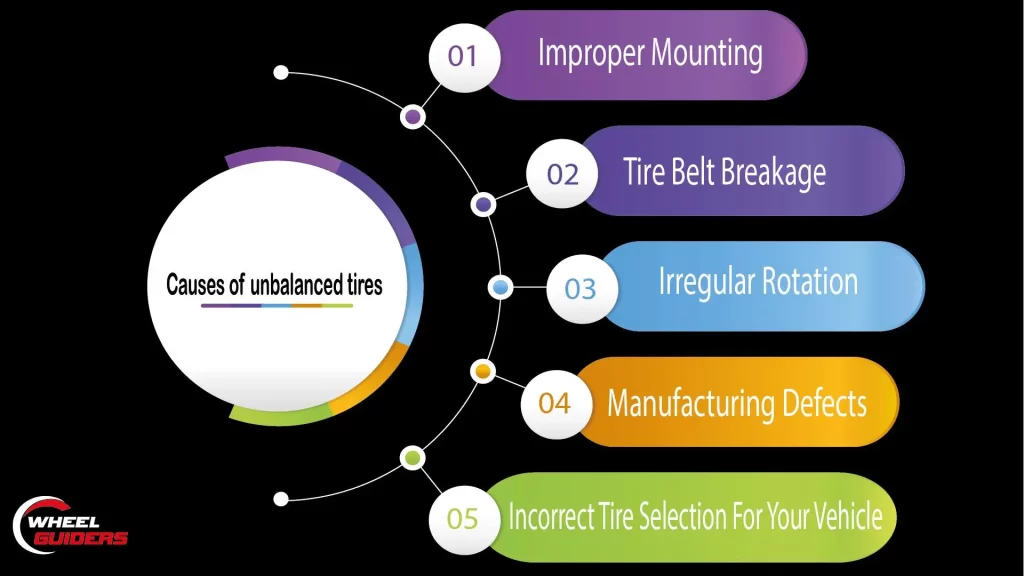
I have enlisted the top factors that can cause tire imbalances in your vehicle. By keeping these causes in mind, you can ensure a comfortable driving experience and extend the lifespan of your tires, resulting in better fuel efficiency and more enjoyable drives.
Improper Mounting
Improper mounting is one of the most important causes of unbalanced tires. They usually go unnoticed until it gets critical. One should always ensure that the wheel studs are properly torqued to the correct specification to avoid imbalanced means of tires which can lead to vibrations and jerks. It is recommended to get your tires mounted by professionals to ensure they are properly mounted.
Tire Belt Breakage
Tire belts can break due to high loads or impact with road obstacles such as potholes, bumps, or other sharp objects. When a tire encounters such conditions at high speeds, it creates tension on the steel belts, leading to weakening and eventual failure over time
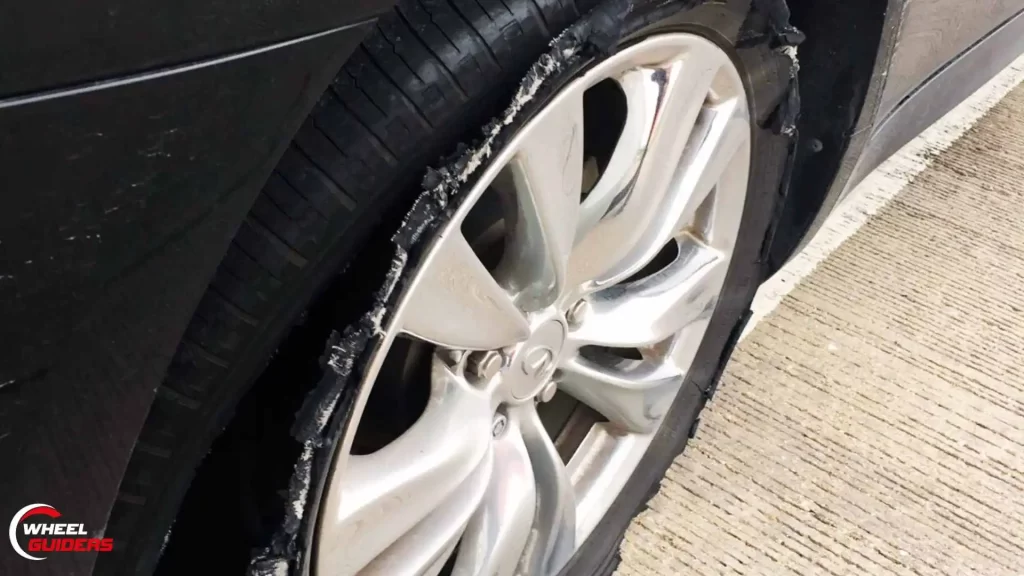
Irregular Rotation
Failing to rotate the wheels at the recommended intervals can result in unbalanced tires and uneven wear. This can cause one or two tires to deteriorate faster than the others, leading to an imbalanced wheel system. The tires need to be rotated at every 5,000 to 7,500 miles can provide a smoother and more comfortable ride while ensuring even tire wear.
Manufacturing Defects
Although manufacturing defects in tires are rare due to the advanced techniques and quality checks employed by manufacturers, even minor defects can worsen over time and potentially lead to cracks.
Tires that are not perfectly round or have other irregularities can affect the rotation velocity of the wheel, resulting in wheel imbalances and potentially causing cracks in the rim.
Incorrect Tire Selection For Your Vehicle
Using tires with the correct diameter, width, and aspect ratio is crucial. Using tires with the correct diameter, width, and aspect ratio is crucial. If tires of different tread patterns, load, or speed ratings are used, it can affect the wheel assembly, resulting in hazardous consequences and tire imbalance-meant.
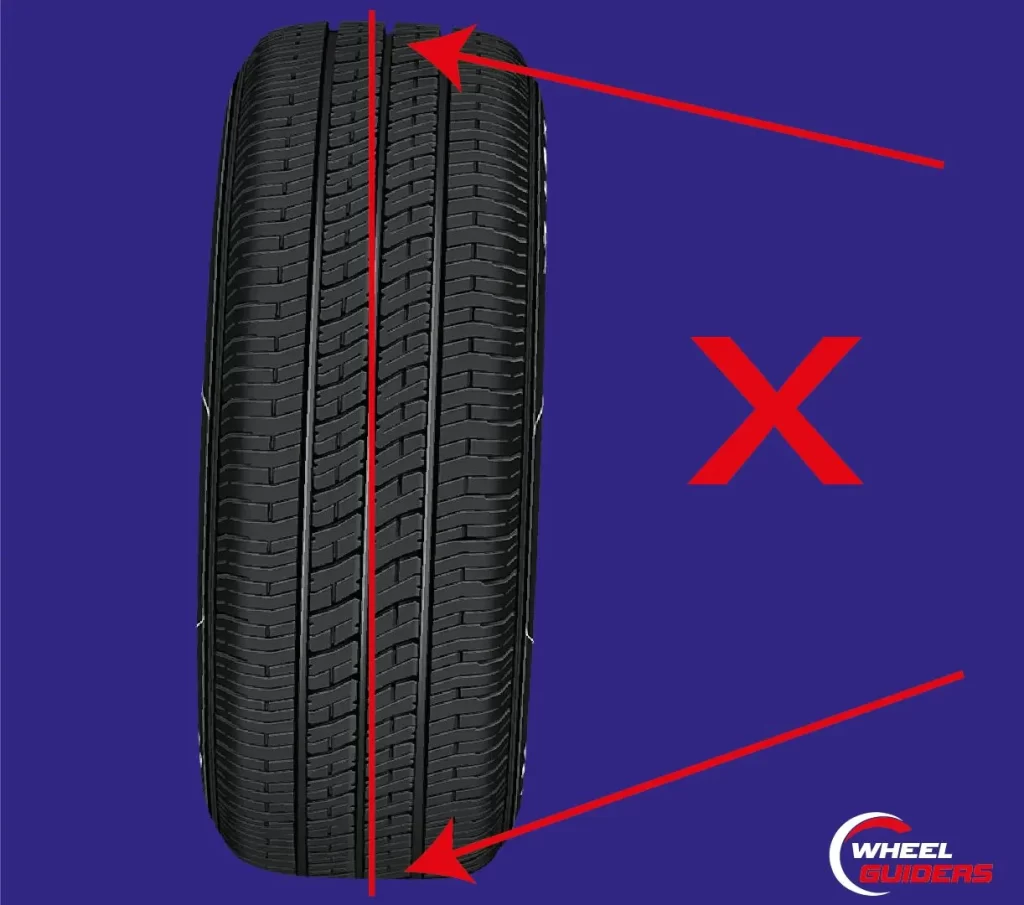
One of the main causes is also using wrong season tires. Using summer tires in snow and ice can make the tire tread stiffen, causing uneven wear, tear, and tire imbalance.
Is It Dangerous To Drive With Unbalanced Tires?
Yes, driving on uneven tires can be dangerous. Weight distribution near the tire and wheel assembly is called tire balancing. An improperly balanced tire can vibrate the floorboard, seat, and steering wheel, particularly at higher speeds. Vibration may be painful, but it can also impair your steering ability resulting in tire blowouts.
Uneven tire wear brought on by unbalanced tires might hasten tire replacement since it can result in early tire failure. Tires that are out of balance can also stress your vehicle’s steering and suspension systems.
It’s crucial to get your tires balanced often, typically every 5,000 to 6,000 miles or as the vehicle manufacturer advises. This promotes effective and safe driving. Get your tires examined by a skilled specialist as soon as possible if you experience strange vibrations or handling problems while driving.
Symptoms Of Unbalanced Tires
There are many different ways to detect if the vehicle has unbalanced wheels. The ways are:
- Uneven air pressure : Uneven air pressure can cause inaccurate tire wear. You may observe that the rubber on one tire’s edge wears down faster than on the other, leading to an imbalance of tires.
- Wobbling while driving: Imbalanced tires might impair the vehicle’s performance. One could notice the vehicles pulling to one side with a wobbling sound, or the driving seems sloppy.
- More absorption of gasoline: Inconsistent tires can force your vehicle to work harder than necessary, resulting in more significant fuel usage.
- Loose brakes: Uneven tires can cause the vehicle to slide to one side when drivers apply the brakes, which makes it hard to stop swiftly or securely.
- Sounds from suspension: Driving with uneven tire wear can harm other elements of the vehicle’s rear suspension, thus resulting in noise from dampers, bends, and bearings.
How Do Mechanics Balance Wheels
In today’s day and age, technology and automation have made it easy for mechanics to accurately identify imbalanced locations and fix them properly for the long term. While these machines are highly efficient and result-oriented, the supervision and expertise of mechanics add the cherry on top.
The first step in the wheel balancing process is for the mechanic to remove the tire from the vehicle and place it onto a balancing machine. The machine then analyzes the wheel by rotating it back and forth to determine any areas of imbalance.
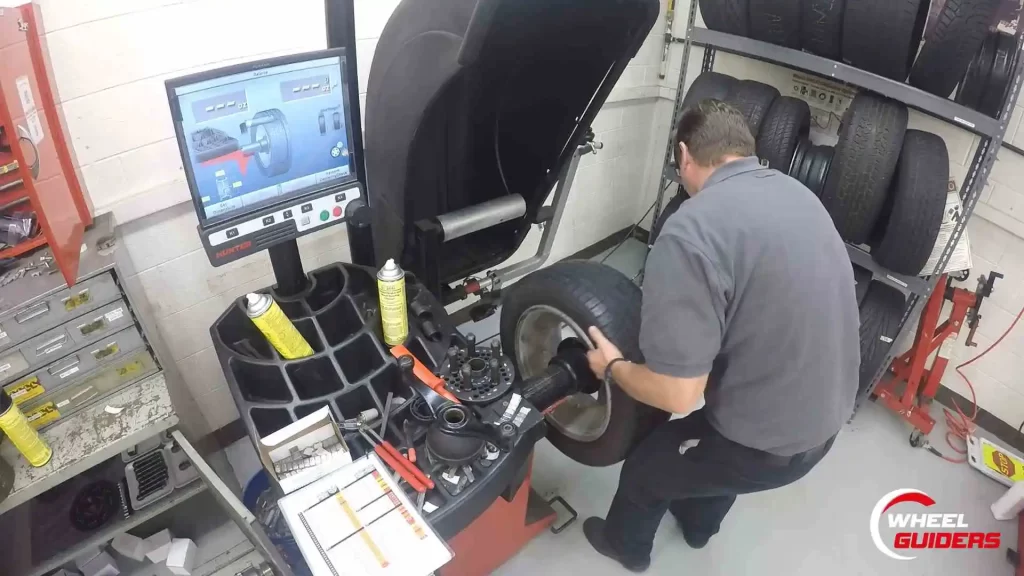
After the machine analyses the tire properly it displays the required weight needed to balance the imbalanced locations. The machine starts balancing the tire as soon as the mechanic places the required weight in the suggested locations.
Once the machine fixes the imbalanced areas, the mechanic manually rechecks the wheel to ensure that it is fully balanced and safe for operation.
What Happens When You Drive On Unbalanced Tires?
Driving on unbalanced tires can affect the tire and vehicle in numerous ways. Here are some of the most common consequences –
Reduced Control
When we apply the brakes, the uneven tire can cause the vehicle to lean to one side, decreasing the efficiency of the brakes and increasing the possibility of a crash.
Decreased Fuel Efficiency
When tires are not in proportion, the motor must work harder to keep the vehicle moving, resulting in lower fuel economy and fuel expenses. In other words, unequal tires can end up causing your vehicle to drink more fuel.
Effect On Vehicle Performance
Uneven tires can impair your vehicle’s performance and steadiness, making it harder to manage and raising the potential for a collision.
Damage To The Suspension
Traveling on uneven wheels might cause harm to other suspension components in the vehicle.
Vibrations And Sounds
Imbalanced tires can produce tremors throughout the vehicle, resulting in a less pleasant ride. They can also generate noise, such as pounding or booming.
Benefits Of Wheel Balancing
Tire balance displays the weight distribution within a vehicle’s tire or the entire wheel on which it is placed. Vehicle repair centre’s determine the tires balance using one of two methods. One is a static balancer, and the other is a dynamic balancer.
Improved Performance
Wheel balancing can assist in removing disturbances, vibrations, noises, and other difficulties that might cause a bumpy and unpleasant drive. It also improves the overall performance of the vehicle.
Providing Safety
Wheel balancing drastically reduces the vehicle’s excessive wear and tear and the danger of a mishap. It enhances the handling, balance, and safety of the vehicle making driving more comfortable and safe and lowering the danger of a mishap.
Increased Tire Life
Wheel balancing prevents premature wear and damage. It extends the lifespan and enhances the tread life of the tire.
Improved Fuel Economy And Reduced Fuel Expenses
Properly balanced tires can reduce the amount of friction that a vehicle needs to overcome, resulting in improved fuel economy and lower fuel expenses
Reduced Stress
Properly balanced tires can reduce the stress and strain on the vehicle’s dampers, connectors, and bearings, which can improve overall performance and prolong the life of both the vehicle and the tires.
Conclusion – How Long Can You Drive On Unbalanced Tires
Running on uneven tires can have several implications for the efficiency and security of your vehicle, along with the general driving experience. While driving on imbalanced tires is doable for a short distance.
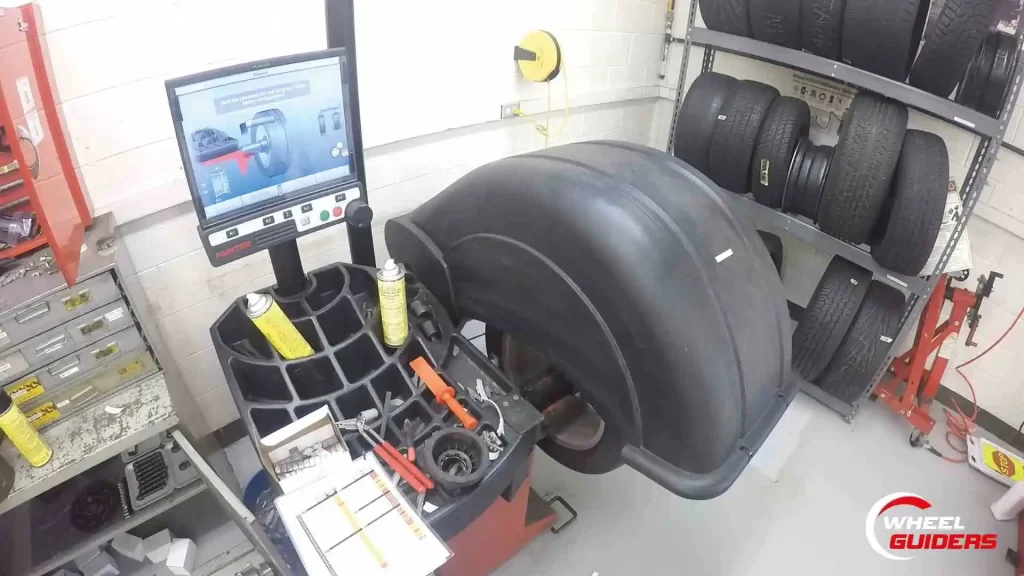
Riding on imbalanced tires can result in unequal tire wear, decreased fuel economy, and potentially hazardous conditions such as loss of handling and control. To guarantee that your vehicle works at peak efficiency and minimises any extra dangers while driving, you must regularly have a qualified technician balance and adjust your tires. It’s also important to always keep a donut tire in the trunk for emergency situations.
I hope you now understand how long you can drive on unbalanced tires and the potential benefits of tire balancing. I strongly recommend never missing your balancing appointments and getting your tires balanced as soon as possible.
